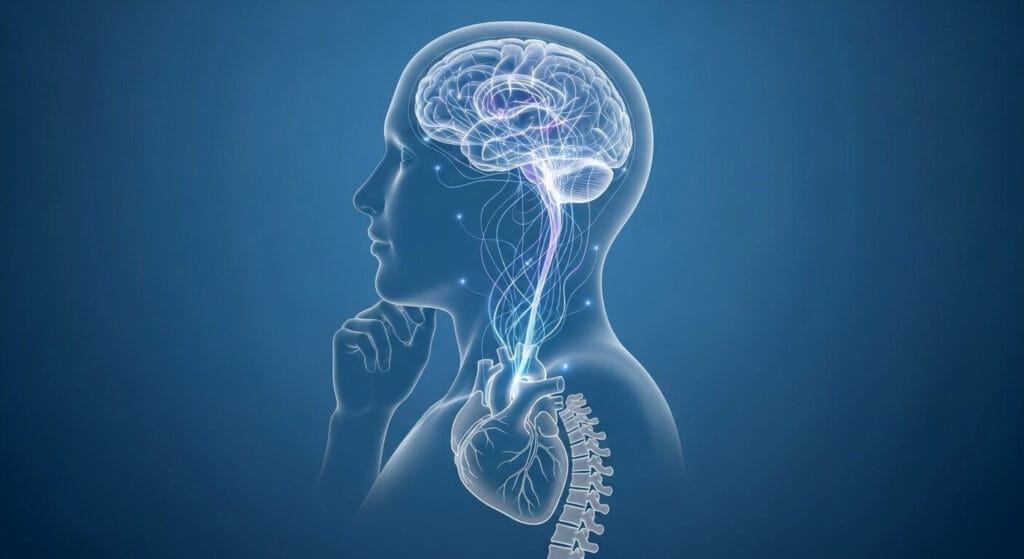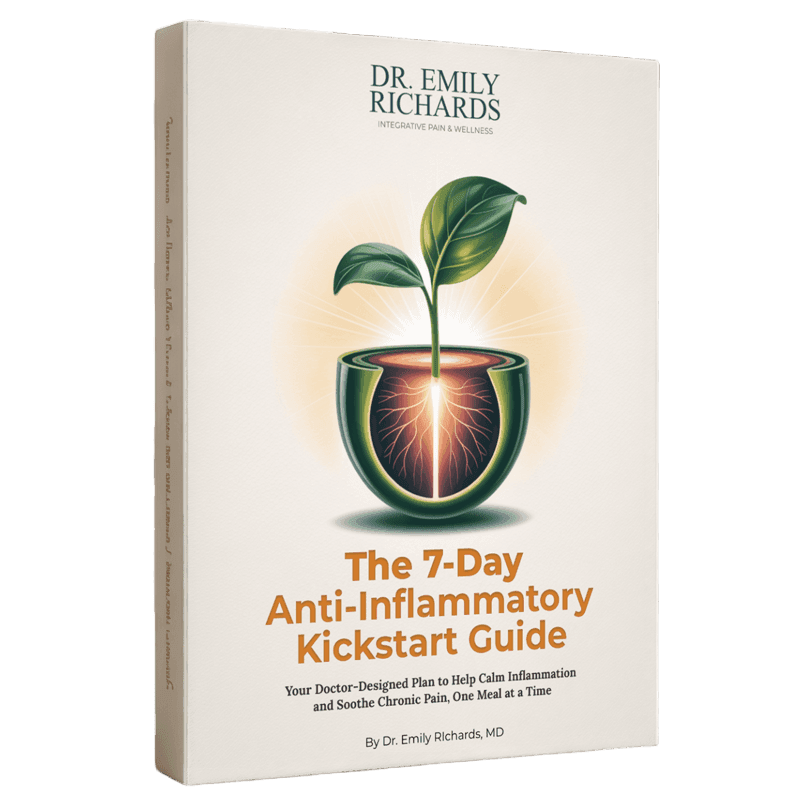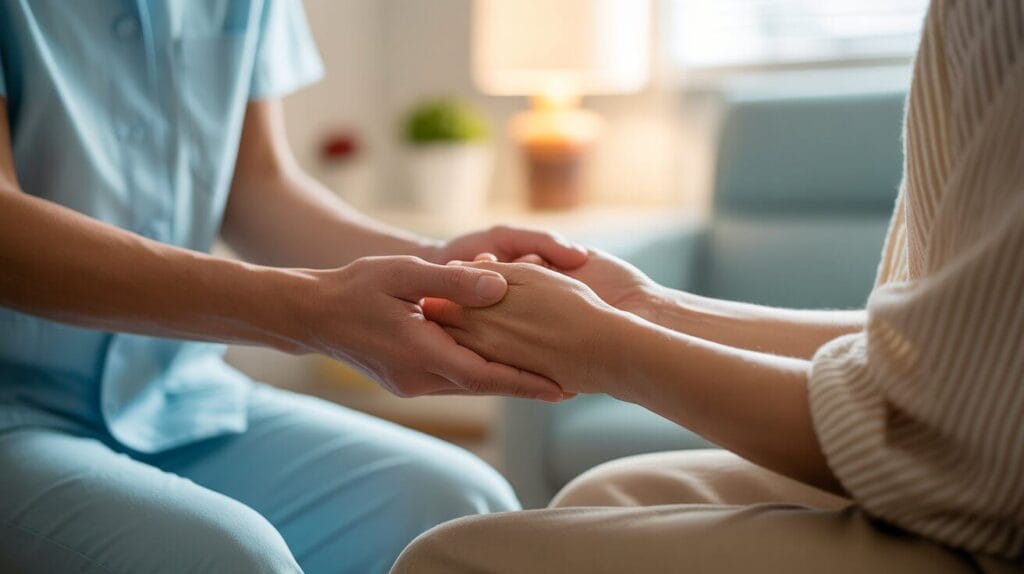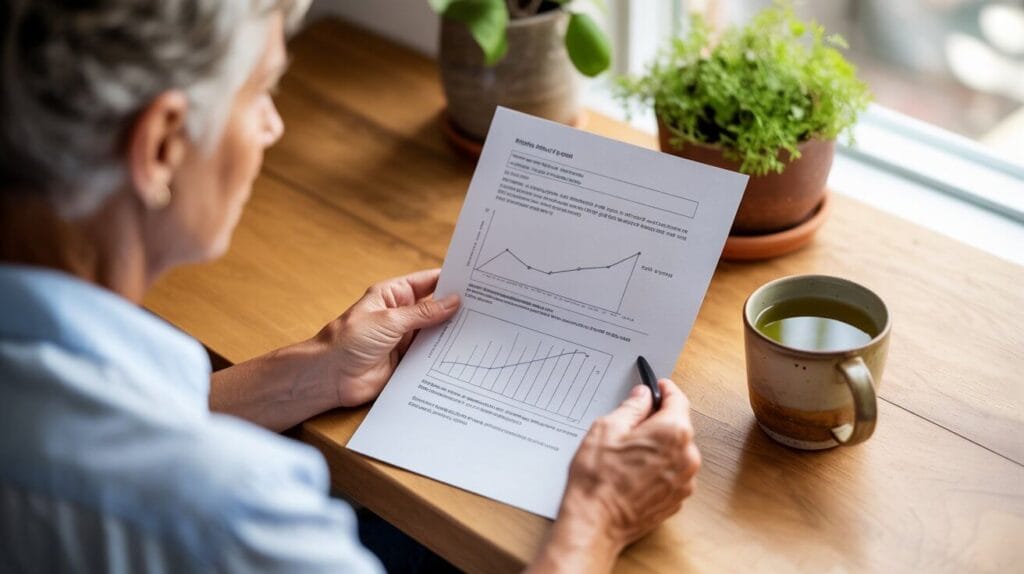“Doc, I don’t want to just be on pills for the rest of my life.”
It’s a fear I hear in my office almost every day. It’s a fear I understand on two fundamental levels: as a physician, and as someone who has personally walked the path of recovery myself. The reliance on the prescription pad can feel like a trap—a temporary fix that doesn’t address the underlying issue of why pain can persist long after an injury heals.
The good news? The most effective long-term strategies for managing chronic pain often don’t come from a bottle. They come from a diverse toolkit of evidence-based, non-pharmacological pain relief approaches that empower you to retrain your nervous system and reclaim control over your body.
Key Takeaways: Proven Pain Relief Without Pills
- What It Is: Non-pharmacological pain relief involves using evidence-based therapies that do not involve medication to manage chronic pain. The goal is to retrain the nervous system, restore function, and empower you with long-term coping strategies.
- The “Gold Standard” Approaches: The most proven strategies fall into three main categories: Mind-Body Therapies (like Mindfulness and CBT), Movement-Based Approaches (like Physical Therapy and Yoga), and Complementary Modalities (like Acupuncture and Massage).
- The Goal is Integration, Not Replacement: These therapies are not about completely abandoning medication, but about adding powerful tools to your toolkit. They work to reduce your baseline pain and reliance on pills, creating a more sustainable, holistic management plan.
Table of Contents
Prefer to Listen? An Audio Overview
For a conversational deep dive into this topic, press play below for the complete audio discussion with our hosts.
Runtime: 2 minutes
View Full Audio Transcript
Narrator: Welcome. Dr. Emily, one of the biggest fears our listeners express is, “I don’t want to be on pills for the rest of my life.” What are their options?
Dr. Emily Richards: That is the most common and valid concern I hear in my practice. The most hopeful part of modern pain care is that the most effective long-term strategies often don’t come from a bottle. We call them non-pharmacological therapies, and they are about empowering you to manage pain directly.
Narrator: The research shows people are looking for the “gold standard” treatment. When we talk about non-pill options, what is considered the gold standard?
Dr. Emily Richards: The gold standard isn’t one single thing, but an integrative approach built on a few key pillars. The first is Mind-Body Therapies. This includes things like mindfulness meditation and Cognitive Behavioral Therapy. These are designed to retrain the brain’s response to pain and turn down the volume on a hypersensitive nervous system.
Narrator: The second pillar seems to be movement. A lot of people ask, “Can physical therapy actually help with chronic pain?”
Dr. Emily Richards: It’s not just that it can help; it is absolutely fundamental. A good physical therapist is an essential partner. They don’t just give you a sheet of exercises; they create a personalized plan to restore function, build strength, and teach your nervous system that movement is safe again. This is crucial for breaking the cycle of fear and avoidance that so often comes with chronic pain.
Narrator: And what about other hands-on approaches, like acupuncture or massage?
Dr. Emily Richards: Those fall into our third pillar: Complementary Modalities. Think of these as targeted treatments. Acupuncture has strong evidence for musculoskeletal pain and headaches. Therapeutic massage is excellent for reducing the muscle tension and stress hormones that fuel the pain cycle.
Narrator: So, how should someone view these therapies in relation to their medication?
Dr. Emily Richards: That’s the key. This is not about throwing your medications away. It’s about adding more powerful tools to your toolkit. The goal is to use these non-pharmacological strategies to reduce your baseline level of pain so that you need to rely less on pills. It’s about creating a comprehensive, sustainable plan that puts you back in control of your life.
Category 1: Mind-Body Therapies – Retraining Your Brain

Chronic pain is not just a physical sensation; it’s an experience processed and interpreted by the brain. When pain persists, the brain can become sensitized, amplifying pain signals in a process called central sensitization. The powerful mind-body connection is key to managing this, as mind-body therapies directly target this mechanism, helping to calm the nervous system and change your relationship with pain.
| Therapy Category | Primary Goal | Best For… |
|---|---|---|
| 1. Mind-Body Therapies (Mindfulness, CBT) | Retrain the brain’s response to pain signals and reduce the emotional suffering component. | Someone whose pain is amplified by stress, anxiety, or catastrophic thinking. |
| 2. Movement-Based Approaches (Physical Therapy, Yoga) | Restore function, improve strength and flexibility, and teach the body that movement can be safe. | Someone with musculoskeletal pain (like back or joint pain) who needs a personalized plan to regain mobility. |
| 3. Complementary Modalities (Acupuncture, Massage) | Provide targeted relief for specific symptoms like muscle tension or nerve pain. | Someone looking to add practitioner-led therapies to their self-management routine for enhanced relief. |
- Mindfulness-Based Stress Reduction (MBSR): This isn’t about “emptying your mind.” MBSR is a structured program that teaches you to pay attention to the present moment without judgment. Research has shown that it can significantly reduce the emotional component of pain and improve quality of life. A 2016 study in the Annals of the New York Academy of Sciences found that mindfulness engages unique neural pathways to attenuate pain, separate from the opioid system.
- Cognitive Behavioral Therapy (CBT): CBT is a form of psychotherapy that helps you identify and reframe negative thought patterns and behaviors associated with chronic pain. A therapist trained in CBT for pain can help you develop coping skills, challenge pain catastrophizing (expecting the worst), and gradually re-engage in activities you’ve been avoiding.
Category 2: Movement and Body-Based Approaches – Restoring Function
The phrase “motion is lotion” is cliché, but it’s grounded in science. Gentle, appropriate movement is crucial for keeping joints lubricated, muscles strong, and your nervous system healthy.
- Yoga & Tai Chi: These ancient practices combine slow, deliberate movements with breathwork and meditation. A systematic review published in Mayo Clinic Proceedings (2016) highlighted strong evidence for yoga’s effectiveness in managing chronic low-back pain. Tai Chi has been shown to be particularly beneficial for the pain and stiffness associated with osteoarthritis.
- Physical Therapy (PT): A qualified physical therapist is an essential partner in your pain care team. They don’t just give you exercises; they assess your specific movement patterns and design a personalized program. This is crucial for addressing different types of back pain, from muscular strains to nerve related issues.
Category 3: Physical & Complementary Modalities – Targeted Relief
These therapies, often delivered by trained practitioners, can provide significant relief and work synergistically with the self-management strategies above.
- Acupuncture: A key component of Traditional Chinese Medicine, acupuncture involves the insertion of very thin needles into specific points on the body. It is used to treat chronic musculoskeletal pain, headaches, and osteoarthritis.
- Massage Therapy: More than just a relaxation tool, therapeutic massage can help reduce muscle tension, improve circulation, and decrease stress hormones like cortisol that can exacerbate pain.
The Path Forward
Think of it this way: embracing non-pharmacological pain relief isn’t about throwing away your conventional medicine toolkit. It’s about adding powerful new tools to it. By integrating these evidence-based strategies, you create a robust plan that addresses your pain from every angle. This is the path to not just managing pain, but to truly living well again.
Frequently Asked Questions
Is it safe to do things like yoga or get a massage if I’m already in a lot of pain?
This is a crucial question. For most chronic pain, gentle and modified movement is beneficial, but it must be done correctly. It’s essential to work with a qualified instructor or therapist who has experience with pain conditions. Always start slowly, listen to your body, and never push into sharp pain.
My doctor only offers me pills. How do I start a conversation about these other options?
This is a key part of self-advocacy. Try opening the conversation with a phrase like, “In addition to the medication we’ve discussed, I’m interested in building a comprehensive plan. Could we talk about integrating physical therapy or other non-medication strategies to help me manage my pain long-term?” Coming prepared with a list of questions shows you are an active partner in your care.
How long does it take for these non-pharmacological therapies to work?
This is a major difference from medication. Unlike a pill that offers relief in an hour, these therapies work cumulatively. For practices like mindfulness or yoga, you may notice small benefits in stress reduction quickly, but significant changes in pain perception often take 6-8 weeks of consistent practice. They are a long-term strategy for wellness, not an instant fix.
References
View Full List of Scientific References
- Zeidan F, Vago DR. Mindfulness meditation-based pain relief: a mechanistic account. Ann N Y Acad Sci. 2016 Jun;1373(1):114-27. doi: 10.1111/nyas.13153. PMID: 27398643; PMCID: PMC4941786. https://pubmed.ncbi.nlm.nih.gov/27398643/
- Nahin RL, Boineau R, Khalsa PS, Stussman BJ, Weber WJ. Evidence-Based Evaluation of Complementary Health Approaches for Pain Management in the United States. Mayo Clin Proc. 2016 Sep;91(9):1292-306. doi: 10.1016/j.mayocp.2016.06.007. PMID: 27594189; PMCID: PMC5032142. https://pubmed.ncbi.nlm.nih.gov/27594189/
- National Center for Complementary and Integrative Health. Chronic Pain and Complementary Health Approaches: Usefulness and Safety. Updated August 29, 2024. Accessed August 29, 2025. https://www.nccih.nih.gov/health/chronic-pain-and-complementary-health-approaches-usefulness-and-safety
- Hilton L, Hempel S, Ewing BA, et al. Mindfulness Meditation for Chronic Pain: Systematic Review and Meta-analysis. Ann Behav Med. 2017;51(2):199–213. doi: 10.1007/s12160-016-9844-2. PMID: 27549928; PMCID: PMC5368208.
- Williams ACDC, Eccleston C, Morley S. Psychological therapies for the management of chronic pain (excluding headache) in adults. Cochrane Database Syst Rev. 2020;8(8):CD007407. doi: 10.1002/14651858.CD007407.pub3. PMID: 32787901; PMCID: PMC7437545.
- Saper RB, Sherman KJ, Cushman S, et al. Yoga, Physical Therapy, or Education for Chronic Low Back Pain. A Randomized Noninferiority Trial. Ann Intern Med. 2017;167(2):85–94. doi: 10.7326/M16-2579. PMID: 28655892; PMCID: PMC6392183.
- Harvard Health Publishing. Tai chi for osteoarthritis. Updated August 29, 2024. Accessed August 29, 2025. https://www.health.harvard.edu/alternative-and-integrative-health/tai-chi-for-osteoarthritis
- Kelly RB, Willis J. Acupuncture for Pain. Am Fam Physician. 2019;100(2):89-96. PMID: 31306052.
Disclaimer: The content provided by Dr. Emily Richards is for informational and educational purposes only and does not constitute medical advice. Always consult with your healthcare provider for any health concerns or before making any changes to your treatment plan.

Start Healing from the Inside Out
Download my FREE 7-Day Anti-Inflammatory Kickstart Guide. It’s a simple, doctor-designed plan to help you reduce inflammation and soothe pain, one meal at a time.



